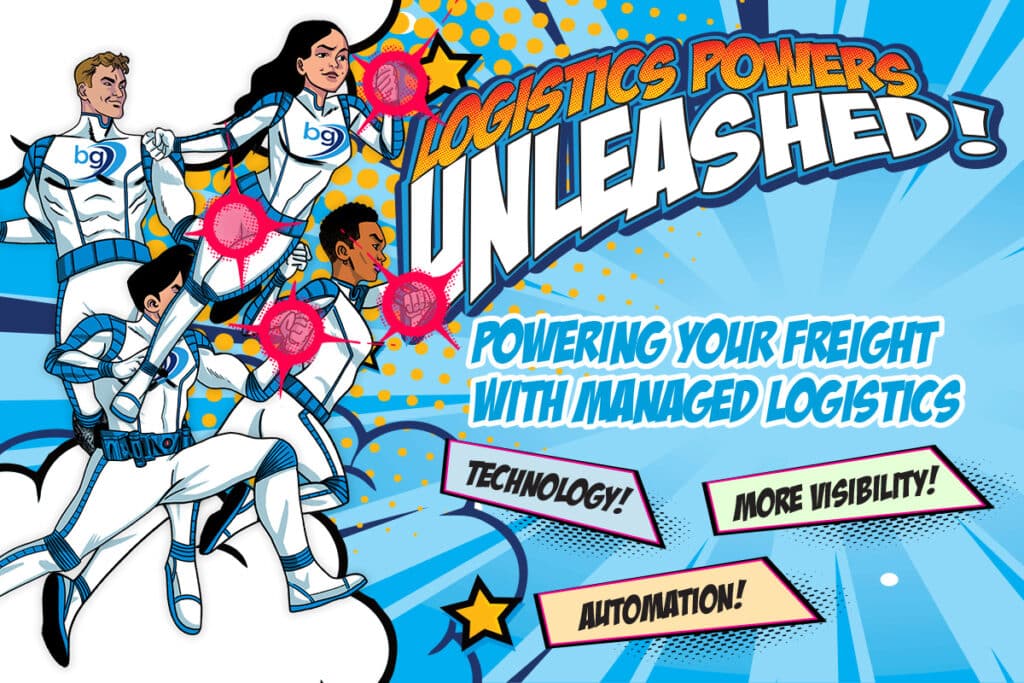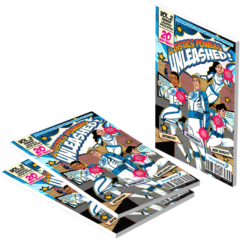
No longer a stand-alone tool for routing and carrier selection, the TMS is fast becoming a central communications hub whose spokes extend deep into the supply chain ecosystem. That’s good news for shippers.
DC Velocity
Ben Ames
Booking a freight shipment in 2021 is perhaps tougher than it’s ever been, thanks to disruptions like pandemic closures, port congestion, trucking capacity shortages, and fallout from the Suez Canal blockage.
Fortunately, the tools that support the freight-booking process are also better than they’ve ever been. Thanks to a burst of innovation in the logistics tech sector, a host of powerful new tools—such as real-time tracking apps and digital freight-matching (DFM) platforms—are now widely available to shippers, carriers, and brokers alike. Pick the type of tool you need, and you can probably choose from a half-dozen products offered by proven, time-tested vendors.
In fact, the wealth of options has led some users to complain of “app fatigue.” Others struggle to keep track of data while working on multiple platforms—whether it’s booking loads, exchanging digital documents, or tracking payments. That process can be further complicated by differences in terminology used by the various platforms—one app’s “ship day” might be another’s “departure day” or “transit day.”
Those challenges have led to the broader deployment of application programming interfaces (APIs) that allow apps and platforms to share data directly, communicating faster and more accurately than people at keyboards ever could. That tight mesh of machines now lets users funnel their fractured data into a single channel, using a transportation management system (TMS) as the common hub.
“What technology is trying to accomplish today is to make the whole experience more enjoyable,” says Mark Ford, BlueGrace’s chief operating officer “Shippers or carriers connect directly to us, and we need to provide a [simple, streamlined] experience.”
TMS vendors say the leading products on the market today serve as “command central,” with spokes that extend into a variety of specialized software applications. That helps streamline the search for freight capacity, allowing users to go to a single TMS application instead of logging onto half a dozen freight-matching services or carrier/broker websites. “What technology is trying to accomplish today is to make the whole experience more enjoyable,” says Mark Ford, chief operating officer of BlueGrace Logistics, a third-party logistics service provider (3PL) that offers a TMS product called BlueShip TMS. “Shippers or carriers connect directly to us, and we need to provide a [simple, streamlined] experience.”
THE PUSH FOR ONE-STOP SHOPPING
Just three to five years ago, most TMS platforms were bare-bones affairs that mainly facilitated the freight tendering process, Ford says. In those days, options like real-time tracking, automated paperwork sharing, and accurate pricing tools weren’t generally available.
Fast forward to 2021, and the modern TMS provides all three of those services—and many more—through connections with multiple freight apps that aggregate data from a vast number of sources.
Those connections are growing by the day. For instance, BlueGrace in July partnered with the digital freight-matching specialist Uber Freight, which had recently expanded into the less-than-truckload market, building links to the online broker’s technology infrastructure.
“Logistics today has a lot of similarities to fin-tech 20 years ago in terms of its software infrastructure as it improves ease of use, analytics, and reporting functions,” says Azad Ratzki, BlueGrace’s chief technology officer. “Ten years ago, [TMS products emphasized] function over form, but now people expect both.”
As TMS platforms evolve to meet more complex user demands, the logistics sector is following a path previously traveled by the financial services industry, says Azad Ratzki, BlueGrace’s chief technology officer. “Logistics today has a lot of similarities to fin-tech 20 years ago in terms of its software infrastructure as it improves ease of use, analytics, and reporting functions,” he says. “Ten years ago, [TMS products emphasized] function over form, but now people expect both.”
That trend has created growing expectations among TMS users of being able to connect to any visibility or freight-matching service without leaving the application, says Robert Brothers, manager of product development for TMS vendor McLeod Software.
While that vision is not yet a universal reality, it’s getting closer by the day, Brothers says. “Data sharing among carriers and shippers has been going on a long time—for example, when you tender freight or provide shipment status. But our role now is to give our customers options,” like enabling even more data sharing, he says.
“Say our customer wants to be a ‘preferred carrier,’ Brothers adds. “For example, a carrier might say, ‘Our customer—a shipper—is on [the visibility platform] project44 and wants us to get connected.’ So, we make sure our systems connect to the visibility providers.
“We get requests all the time for new solutions—there are lots of mobile apps and telematics—so our task is [to figure out] how to allow them to come into our ecosystem,” Brothers says.
At the same time, McLeod has been working to give its shipper clients access to a wider array of carriers. The company says it now supports connections to a half-dozen DFM platforms.
MAKING CONNECTIONS
Software developer MercuryGate International Inc. has taken much the same tack, says Steve Blough, the company’s co-founder and chief innovation officer. Like other big market players, MercuryGate has been expanding its network in order to give clients more transport options—a major consideration in light of recent moves by UPS Inc. and FedEx Corp. to cap the number of parcels they’ll accept from a shipper, he notes.
The additional connections can also help users deal with the supply chain disruptions that increasingly pop up in specific—and unpredictable—parts of the country. “It used to be a full market thing; if rates were high, they’d be high everywhere,” Blough says. “But now, it’s very much in certain lanes.”
To help its clients navigate these complexities, MercuryGate has upped its connectivity game. For example, in April, it acquired the last-mile delivery optimization specialist Cheetah Software Systems in a bid to bolster services for its e-tail clients. In 2019, the company integrated its TMS with Uber Freight’s digital freight brokerage platform in order to offer users greater visibility and access to capacity. That move was critical in an age when changing consumer behavior and driver shortages have made finding capacity more complex than ever, says Kathryn Buchanan, MercuryGate’s VP of product marketing.
MercuryGate today combines those expanded features—along with inputs from several other digital freight brokers, contract fleets, couriers, and even private fleets—to provide a better freight-matching experience for all concerned, she says. Thanks to these links, the now-hyperconnected TMS can generate results from more sources than ever, helping connect shippers and carriers in a tumultuous time.




